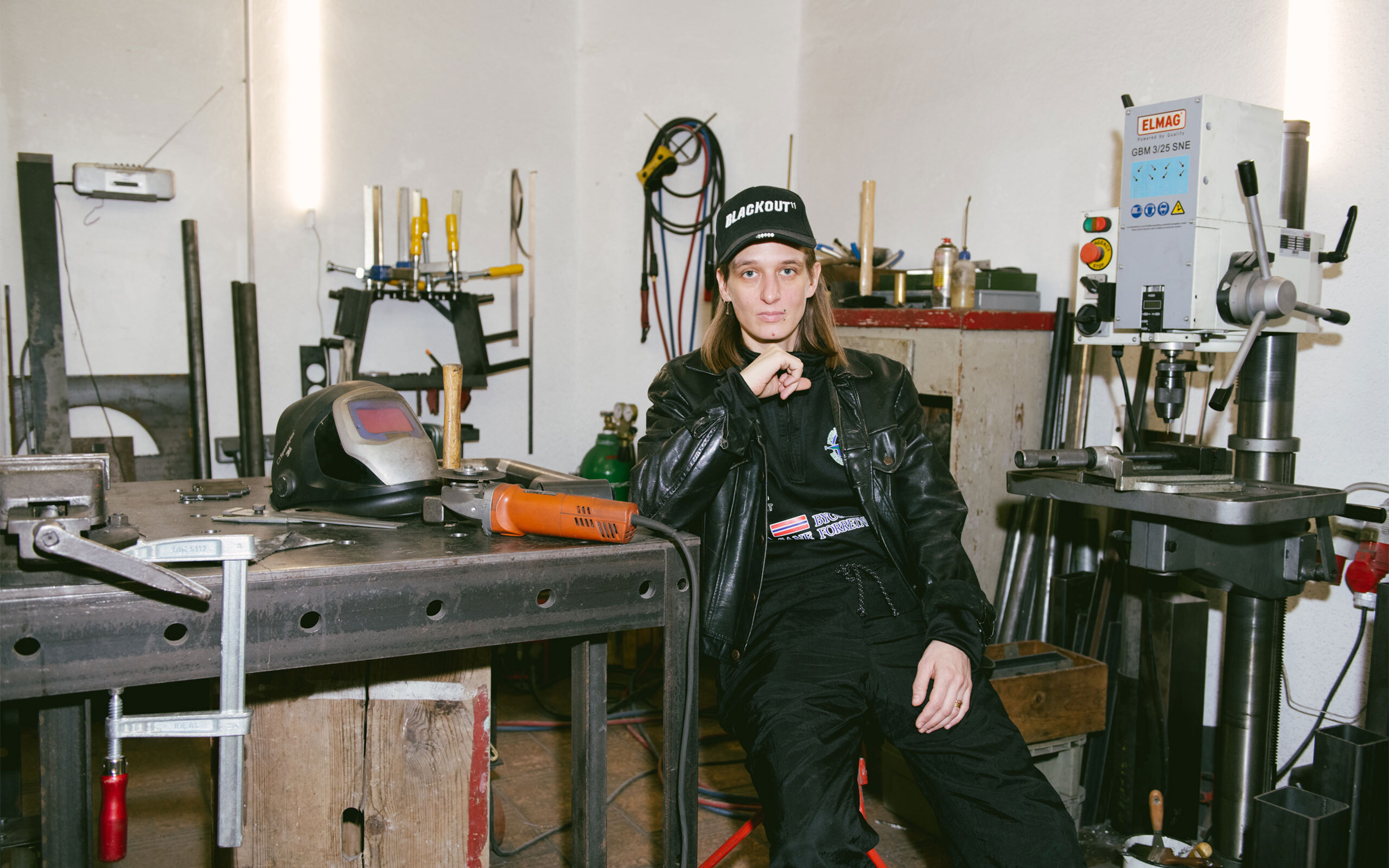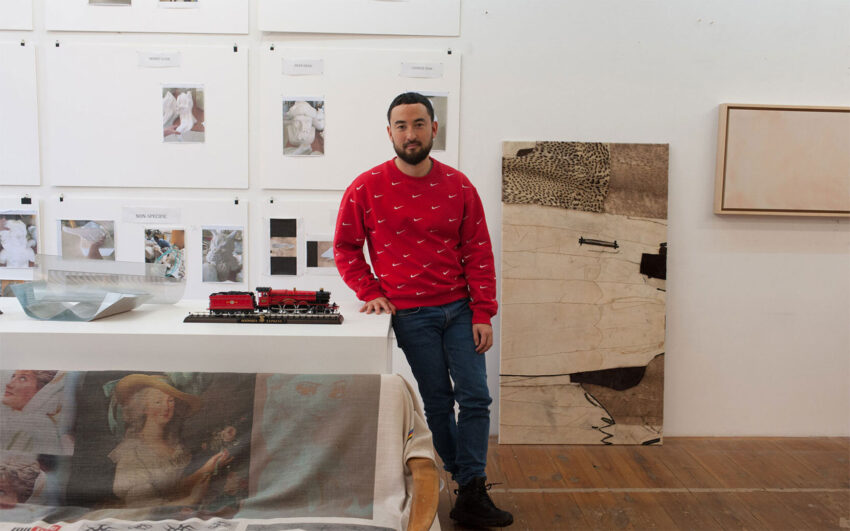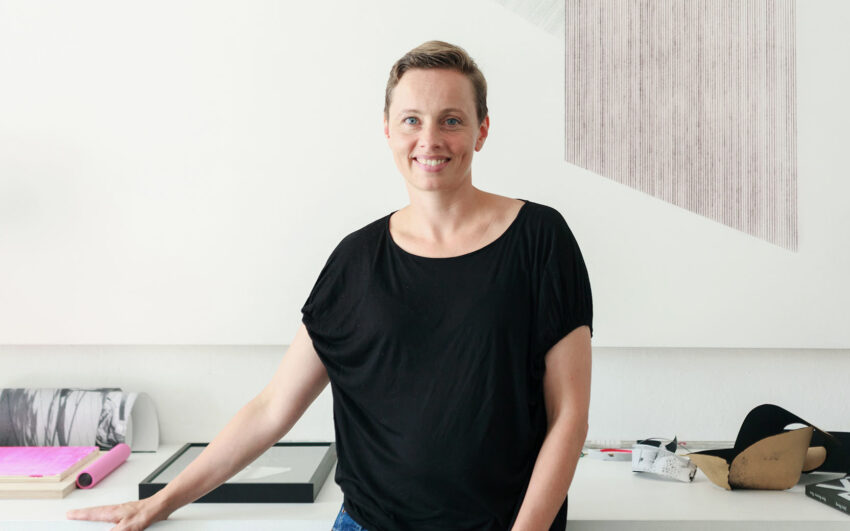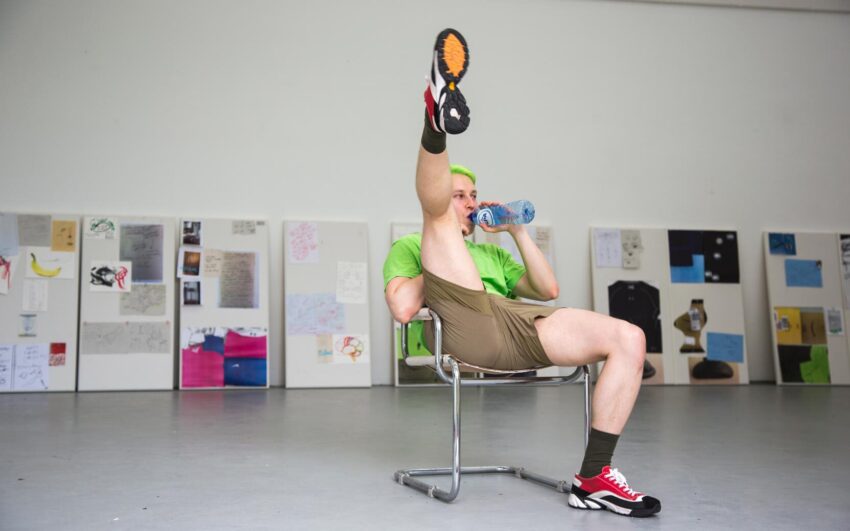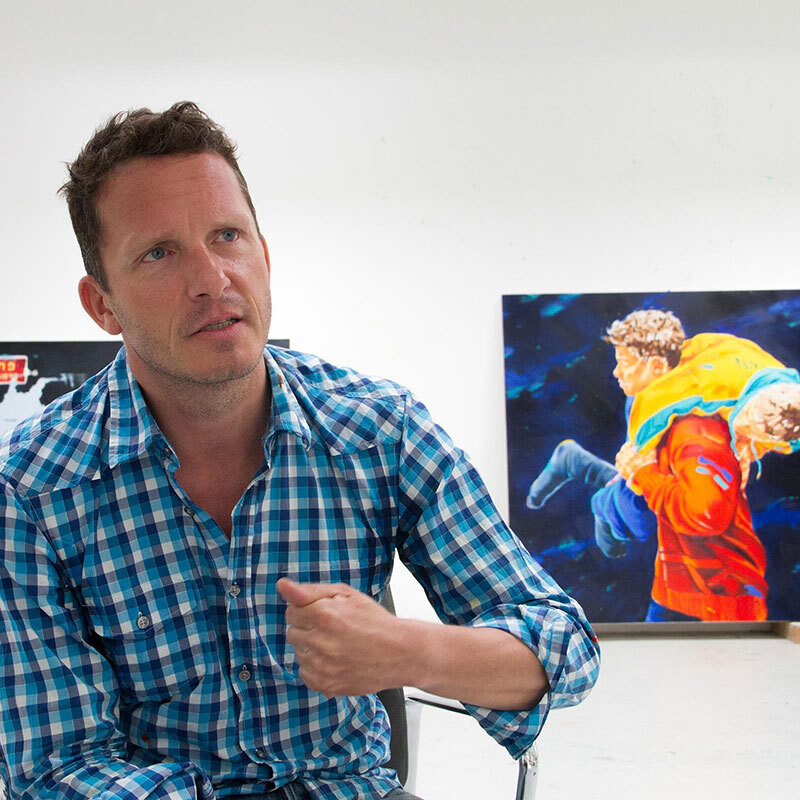At first glance, Toni Schmale's sculptures made of steel and concrete evoke associations with equipment in which human bodies may be clamped, or of fitness machines that seemingly invite one to use them only for it to be found on closer inspection that such invitation cannot actually be realized. During our visit to her studio in Vienna, the artist expressed her reluctance to explain her work, but welcomes questions once the viewer has examined the work.
Toni, how would you explain in a few words what you do to someone who does not know your work?
My answer would be that I do not feel able to explain this in a few words. I would say: Look at my work first, perhaps then you will have more specific questions about it. There's nothing to understand in my work, you should look at the object as impartially as possible and then ask questions about it. That's how you get to the content of my work, via the form.
You often work with concrete and steel. What interests you about these materials and their properties?
In the case of steel I feel that, unlike wood for example, it is a material that is very precise. For example, if you go shopping in the steel trade and order a 60 mm pipe with a 2 mm wall, you can trust what you receive as a starting point. In the case of wood you request a certain measurement, it is supposed to be 10 cm, you measure and it is 12 cm. The precise starting point, which I can work with, is extremely good in the case of steel. In terms of processing, with steel you have something to work with: it takes a lot of effort to give the material a form. It involves a certain amount of force, the slowness of working process suits my own pace. I have this 60 mm form pipe, which is then forged, crushed, stretched, and somehow pushed to the limits of the material – to the extent possible for the material.
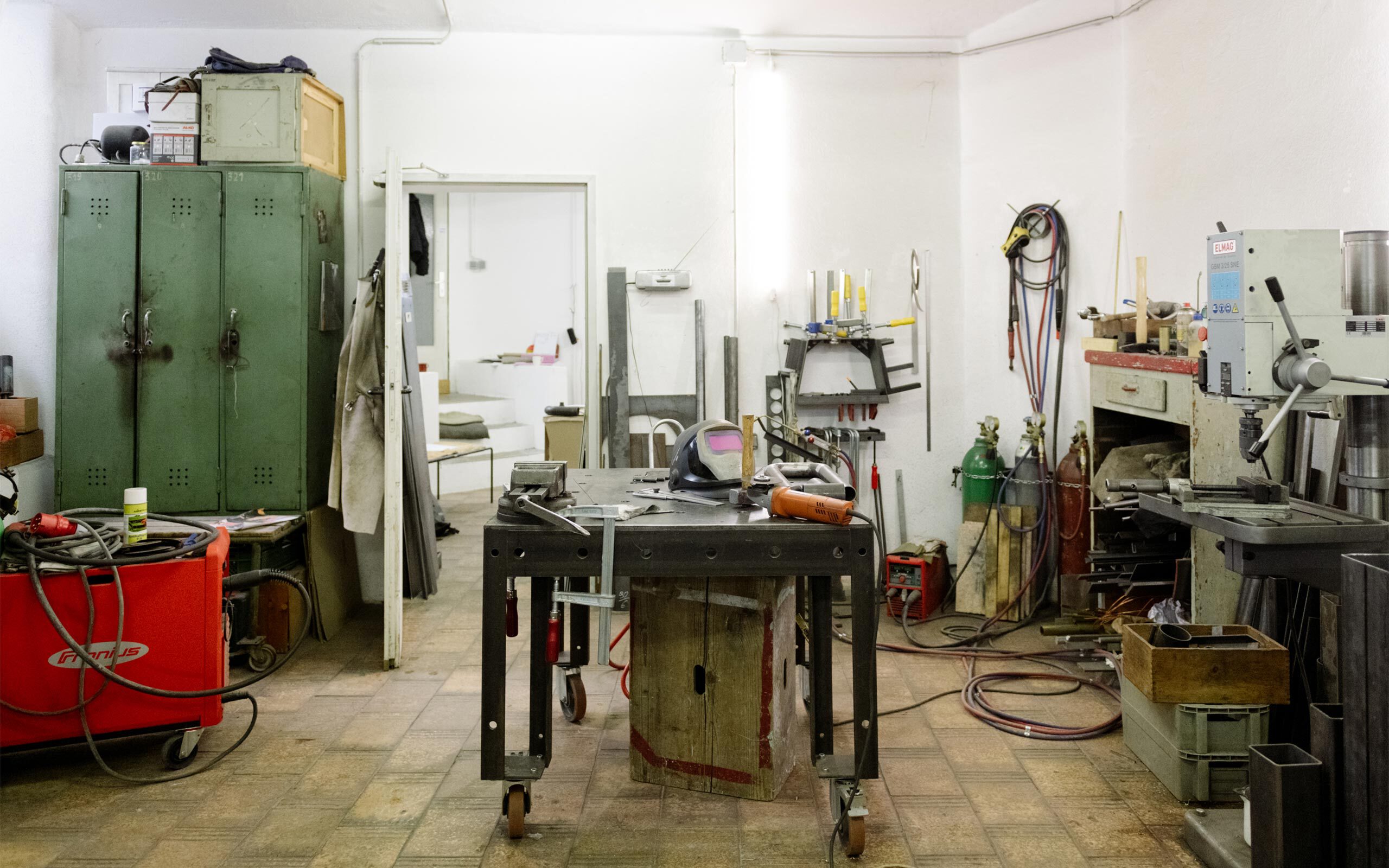
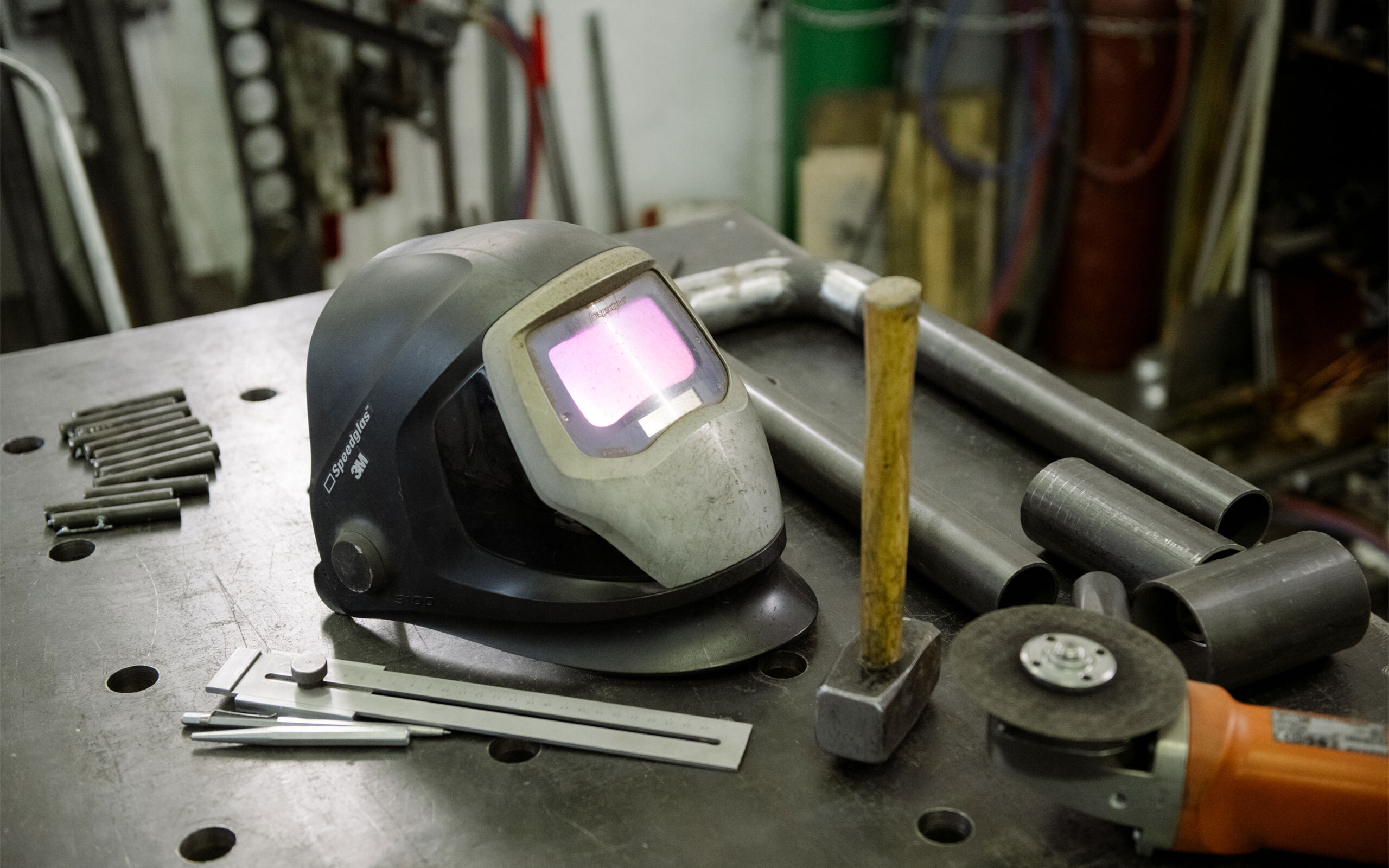
How are your steel sculptures constructed? How do you achieve the seeming appearance of their being made from “one piece”?
With steel you certainly have to work very precisely, depending on the kind of sculpture you want to create. In my sculptures the inner connections are extremely important, they look like complete parts, but they are made up of many small parts, fragments – but you don’t see how they are joined. You think they simply belong together. It is very important for me that you don't start thinking about how the parts connect. It works well with inner connections that are built up like the connecting parts of a chandelier.
Do you work with technical drawings and/or templates?
No. I have small sketchbooks in which I record many small drawings and preliminary sketches in all variations of forms and ideas for the assembly of parts, but this is far from a technical drawing.
In art, concrete as a material usually has more of a base or holding function...
I don’t use any form of pedestal for my works, the parts stand directly on the floor, I want to avoid any sense of sublimity of the sculpture. If there were anything pedestal-like, it would necessarily be an integral part of the work, not something made afterwards to place the sculpture on. For me, concrete has an architectural reference: the exposed concrete that I cast and, in part, the terrazzo surfaces that I sand. You always work in the negative, but with steel you always work in the positive, and with concrete the real work is in the making of the mold.
What is especially important to you about your studio?
I've been here in this studio since 2013, and I consider myself very fortunate to be able to make noise without objection. So far, there hasn't been any trouble with the neighbors at all. From time to time there is nightly activity, but nobody has ever complained about noise. That is the first point that is important to me, in addition I have the space arranged in the way I feel most comfortable, including this small fitted kitchen I built myself. These sorts of details are very important to me and they are generally reflected in my work. Other than at weekends, I spend my days here from morning until the evening.
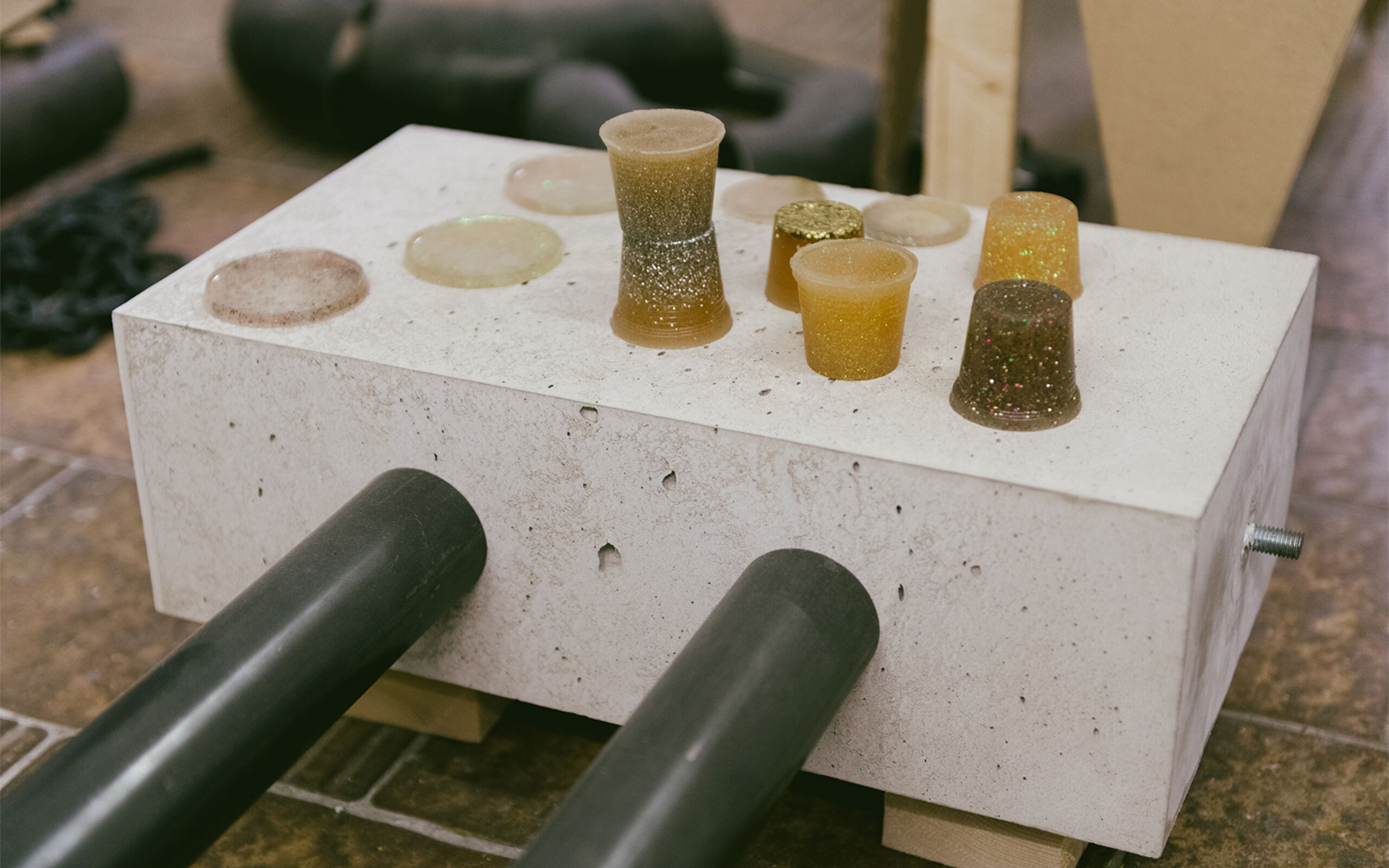
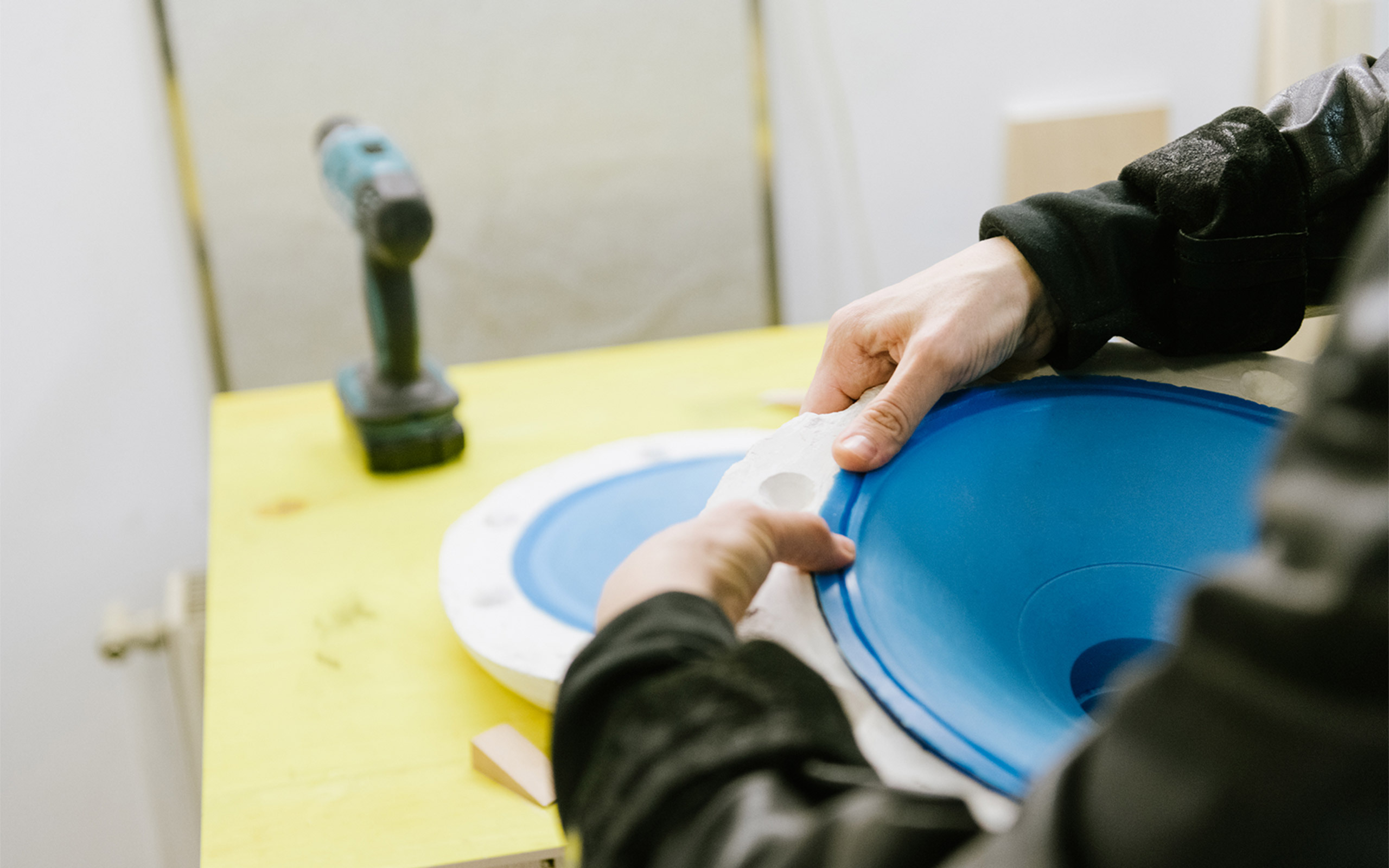
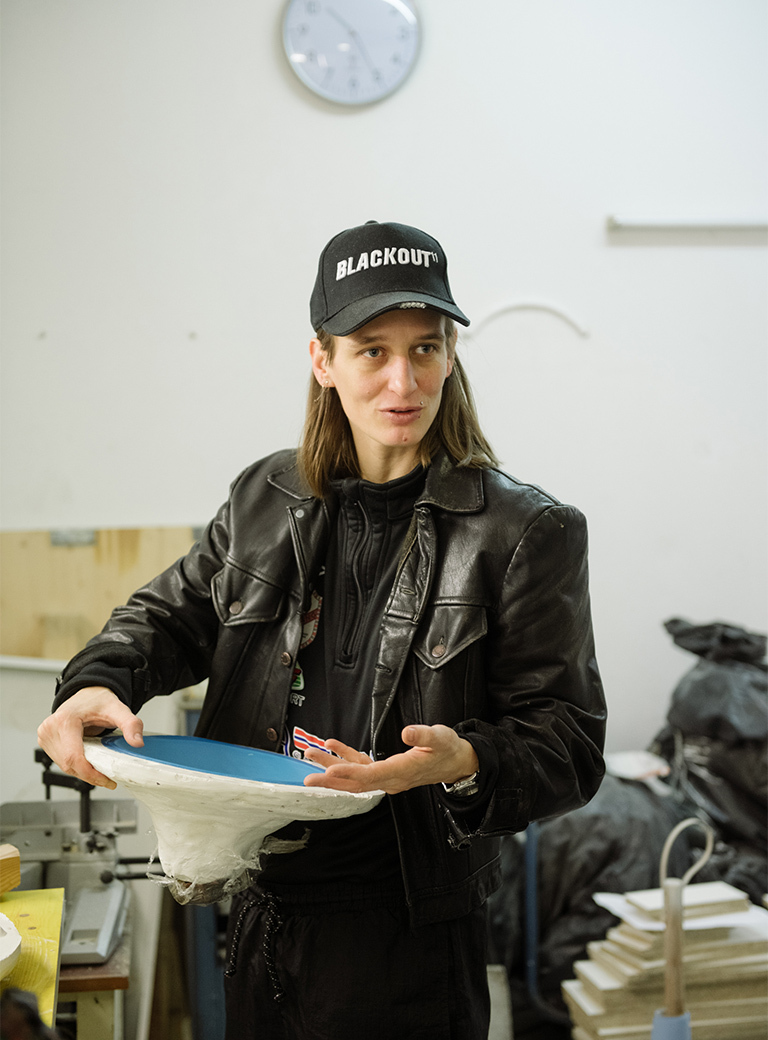
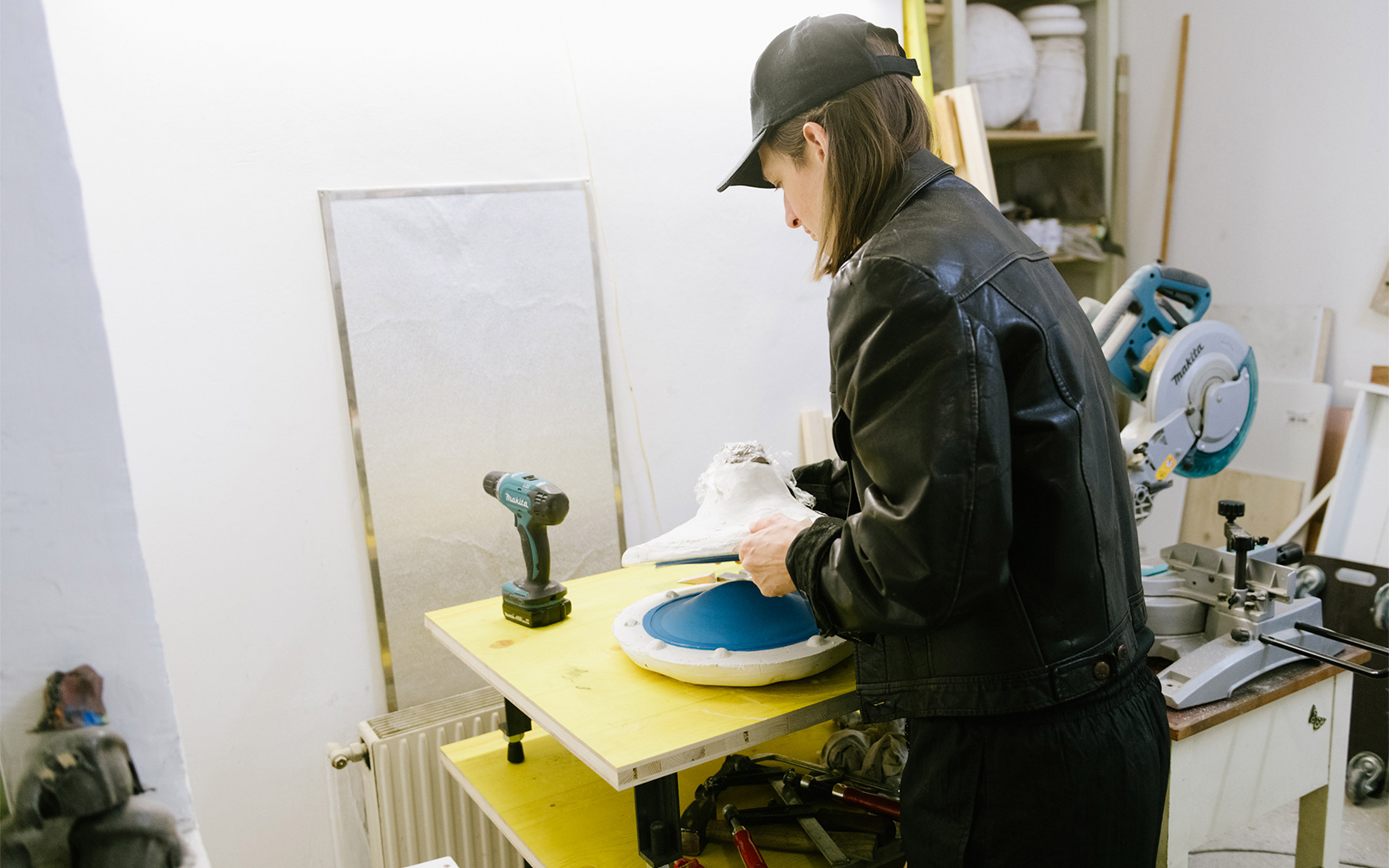
You were born in Hamburg and had a career as a soccer player in your first professional life. How did you come to art?
I first played for HSV in Hamburg and then I was poached by Cologne. That was the moment when I thought I'd see if I wanted to continue with competitive sports and all that goes with it. I noticed that it works, but not with what I usually do. It was also not possible to just let the day end; you always have to be sure you are fit for the next day and are able to perform well. So I broke the contract and ran away to Berlin. The consequence was that it just happened this way: I prepared a portfolio and despite having no references or knowing people who make art, my application to Leipzig was accepted; that’s actually how I somehow arrived with art.
And how did you end up in Vienna?
I grew up in Hamburg, and as I already said, started my studies in Leipzig. Initially I only wanted to enroll in an Erasmus student exchange program here in Vienna, but ultimately I got stuck here, like many other artists from Leipzig and Berlin.
In Vienna I joined Carola Dertnig’s performance class, which was an extremely good start. Later I studied with Monica Bonvicini. I have the feeling that Vienna is simply a good place. At the academy, I really had this impression, both regarding such topics as gender studies, and regarding the teaching staff, that doesn't exist in Leipzig at all. I felt much better off, that was actually the reason why I stayed here. Vienna is simply a good place to live and to make art.
At first glance, soccer and art do not seem to have much in common…
There’s a great similarity, at least in terms of discipline: the way you physically prepare and pace yourself. Also the thinking in different leagues is similar in sports and in art – the question which classes you attended, with whom you studied, corresponds in soccer to the question of which club you played for, with whom you trained, who made you great; there is also that parallel of the need to have people who believe in you Of course, in soccer as a competitive sport, performance is more measurable. No matter how shitty you played, you scored three goals, so you're good. So in soccer success can be measured quite differently than in art, where it is less strategically enforceable. But the biggest difference is that soccer is a team sport, you never play alone.
Your work is often compared with fitness equipment and torture devices. Does this have something to do with your past as an athlete? Your work the good enough mother, for example, evokes associations with fascial manipulation techniques for muscle relaxation.
This is not a coincidence. My works are a collage of different machines, which are put together to form a new machine. This new “machine” then no longer reveals directly what you can do with it, but it evokes associations with such diverse forms of machinery as fitness equipment and combine harvesters. In my sculptures I skew this other functionality and bring it to a different level. The feeling arises that the sculpture could be capable of something, but it makes no suggestion as to what action might be required. It doesn't tell you: Okay, use me in such and such a way. I rather want you to be thrown back on yourself while looking at the sculpture and to ask yourself: Okay, what is this all about?
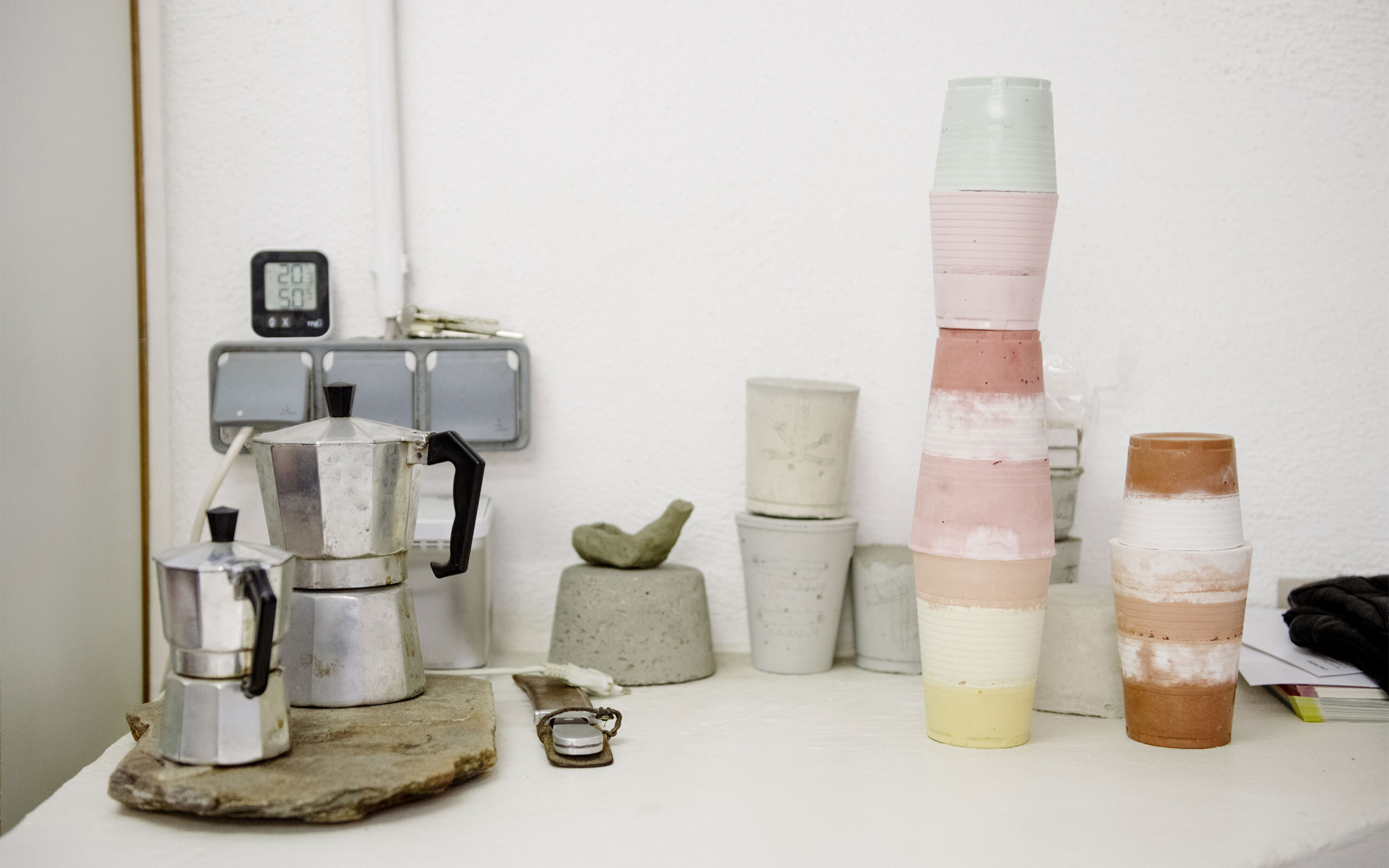
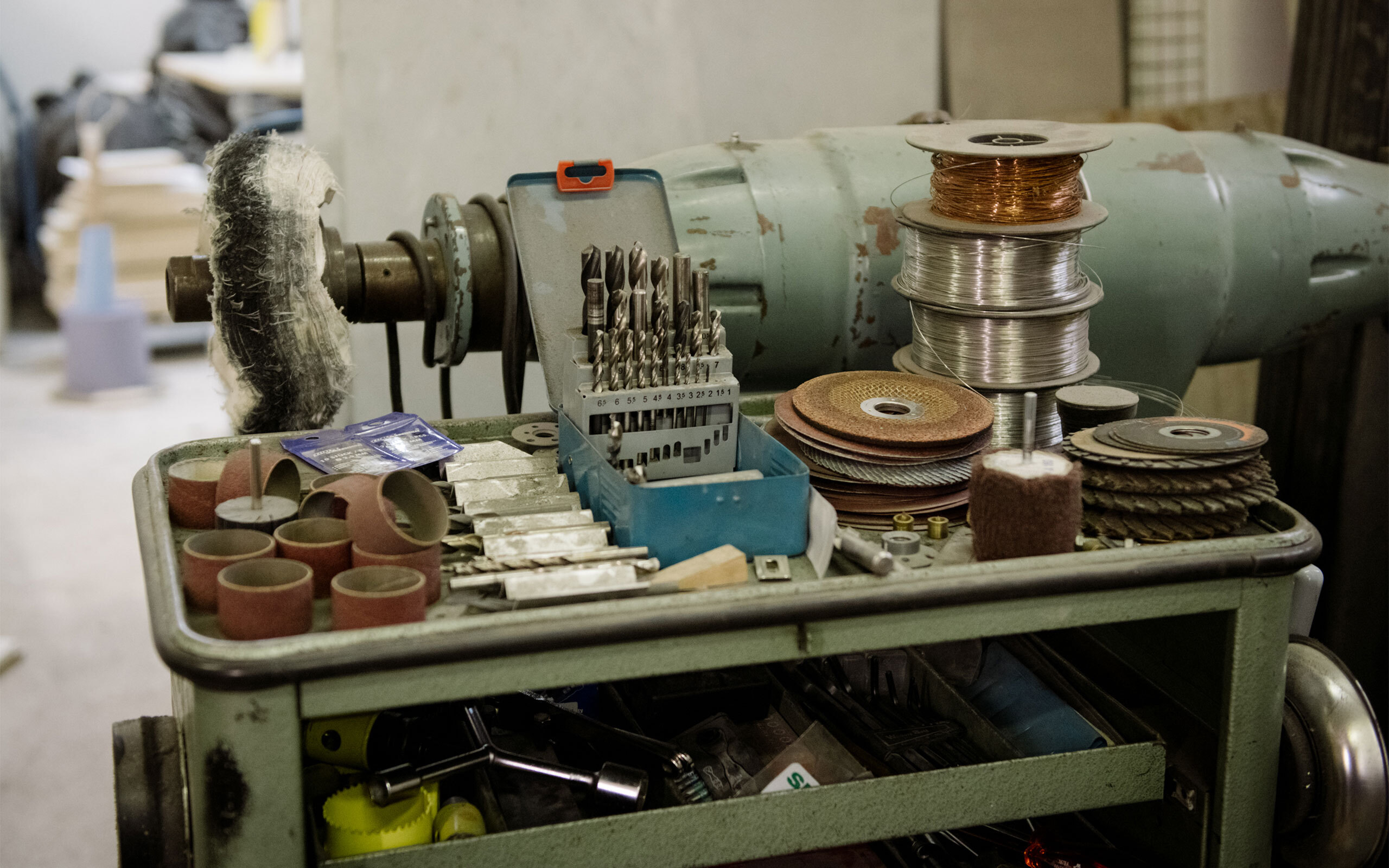
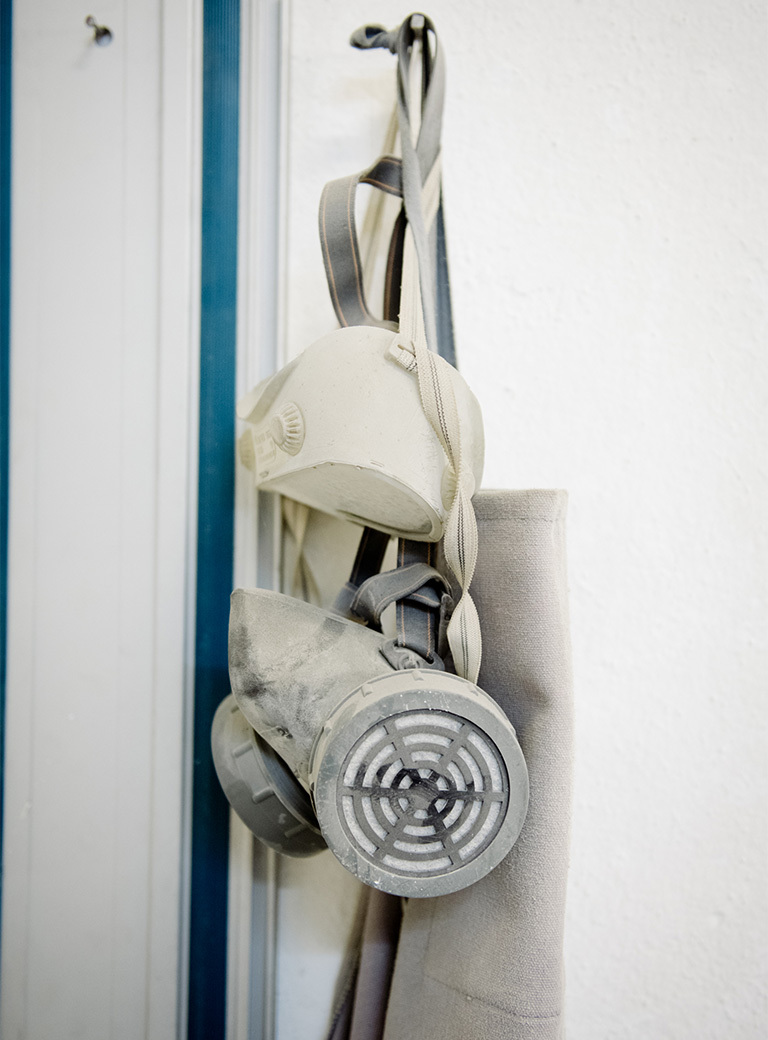
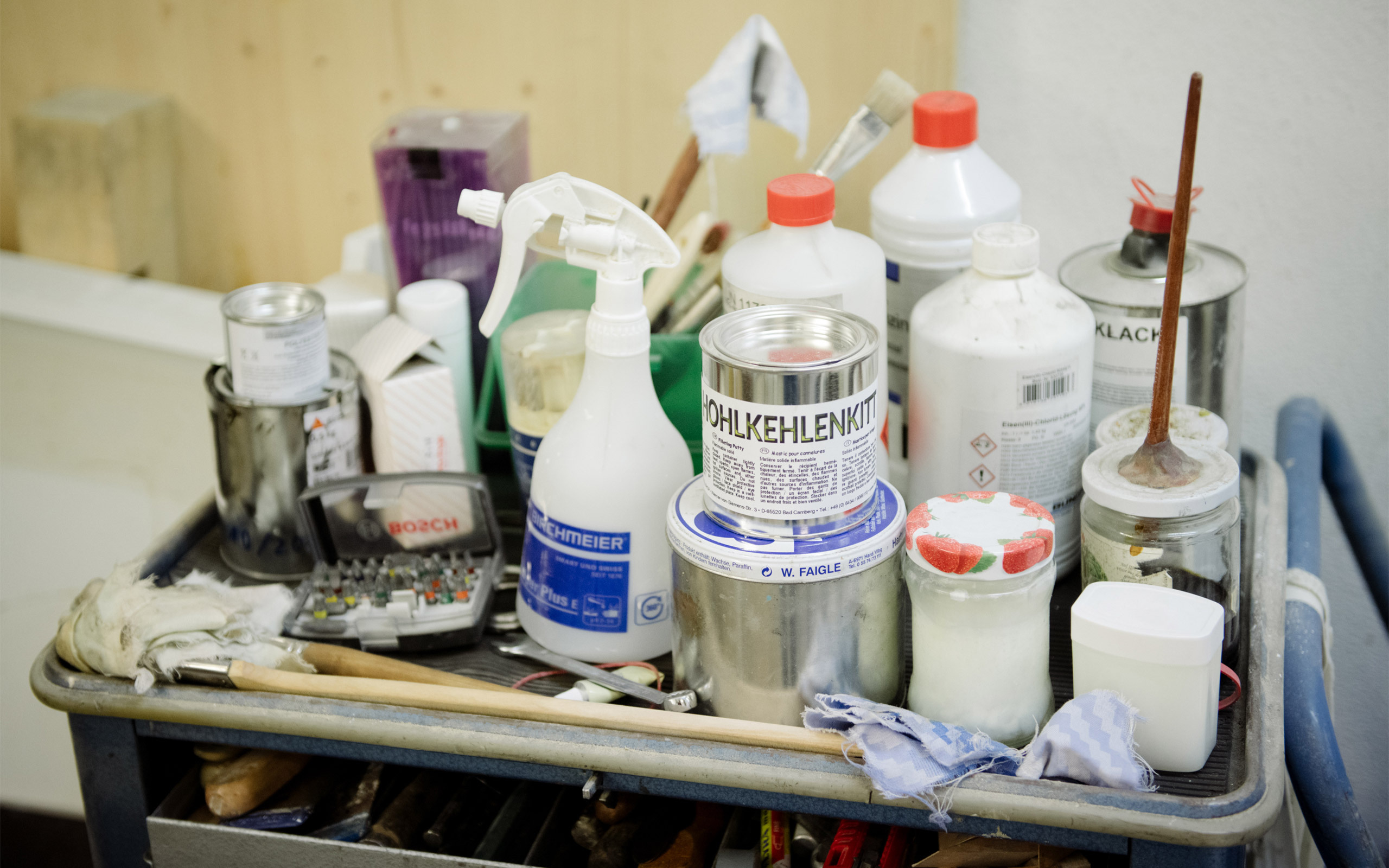
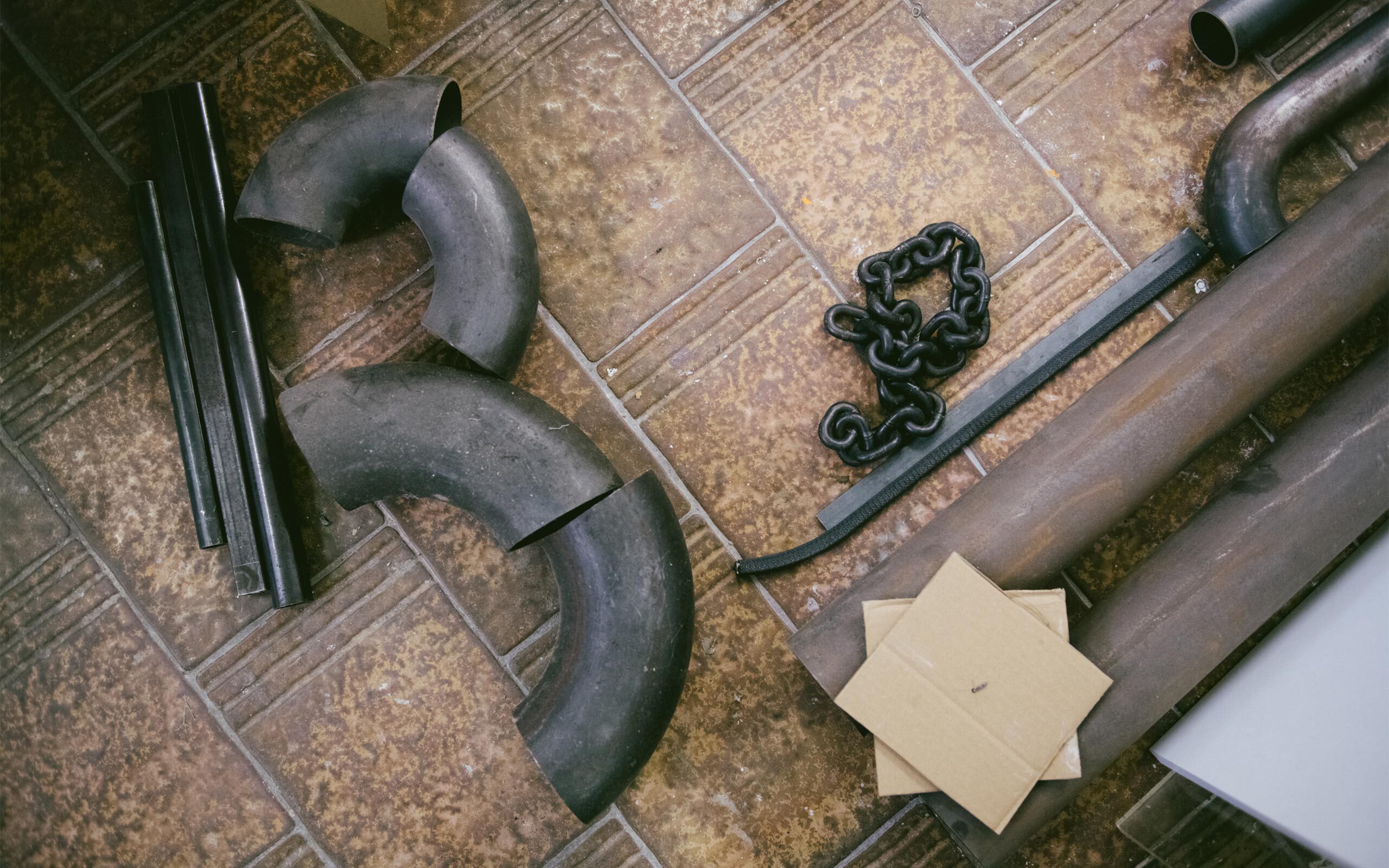
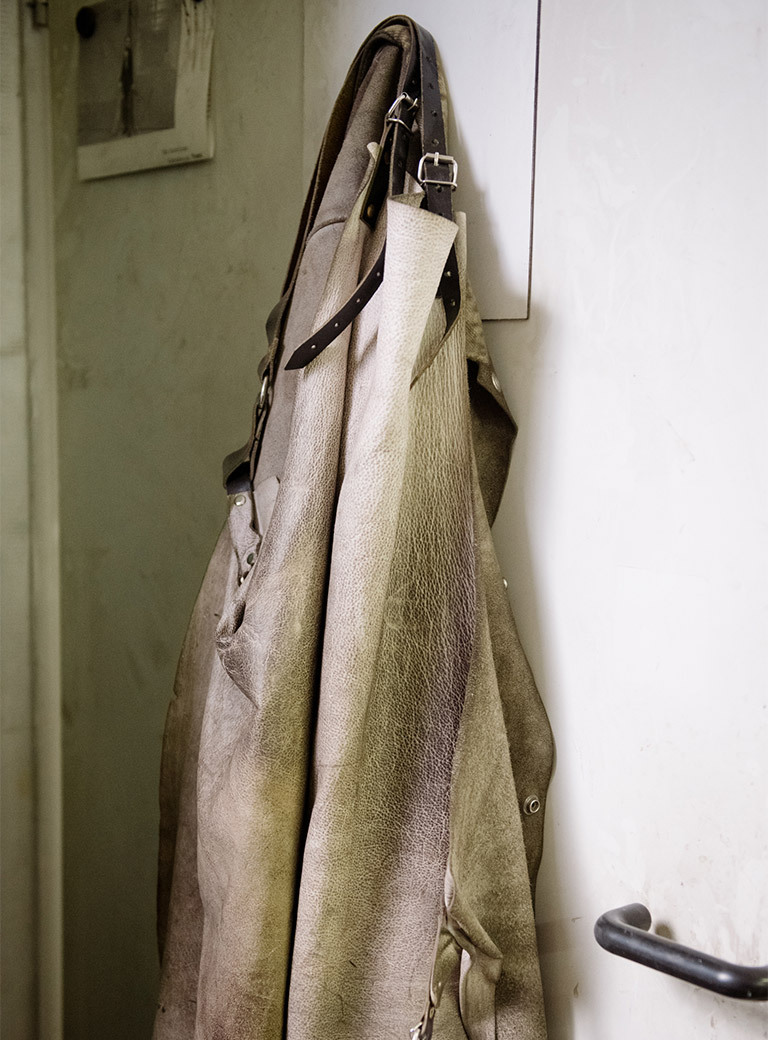
Your works have very eloquent titles: Do they arise with the idea for the work, or is it the resulting form that prompts the title?
Form and content intertwine, sometimes a title is given to the work quite quickly, sometimes it only exists when the work is nearing completion. But actually it's an interlocking. In this process Wally Salner, my girlfriend, often has the best title ideas.
There are elements in your work that occur more often, such as fists.
The fists are cast hands, casts of my own hands, and have been appearing in fragments in the series fisting since 2012. Actually, the hands are the only specific reference to bodies in my sculptures.
How does your art fit into the present time?
This time, the political situation, the social situation, of course everything flows into the works, but with me there are no one-to-one translations or themes that are clearly readable. I'm very much interested in the viewers’ projection; I don't have one single message. I completed the work, and then it stands there and is “free”. What was mine is now contained in it. At that point, I have to leave it to itself. It must be able to stand for itself without me saying anything about it or having anything written about it. Of course it is always an additional enrichment when you get more information, but first the object must be able to stand on its own.
You have studied Donald Winnicott and his theories related to the concept of the transitional object. According to this concept, an infant temporarily separated from its mother compensates for this loss by transferring its emotional needs to a so called transitional object. This stands between the inner and outer world. Do you see parallels in these ideas to your work?
I don't know if artistic work is not always also a form of transitional object, but I think that a sculpture is always an attempt to create a connection between the inner and outer world. There is a transfer of inner images and of imagination. I've called sculptures “transitional objects” before, and then I thought, “Oh, you can leave that out.” Somehow I don't like psychologization at all, but I like this word “transitional object”, even without knowing where it comes from. Although I have studied Winnicott and his theories and find them interesting, I also simply like this image of transition – the idea that nothing fixed exists. It is neither beginning nor end. I wouldn't say it's something in between, but there is something decentralized about it. I find this thought a nice term in relation to objects.
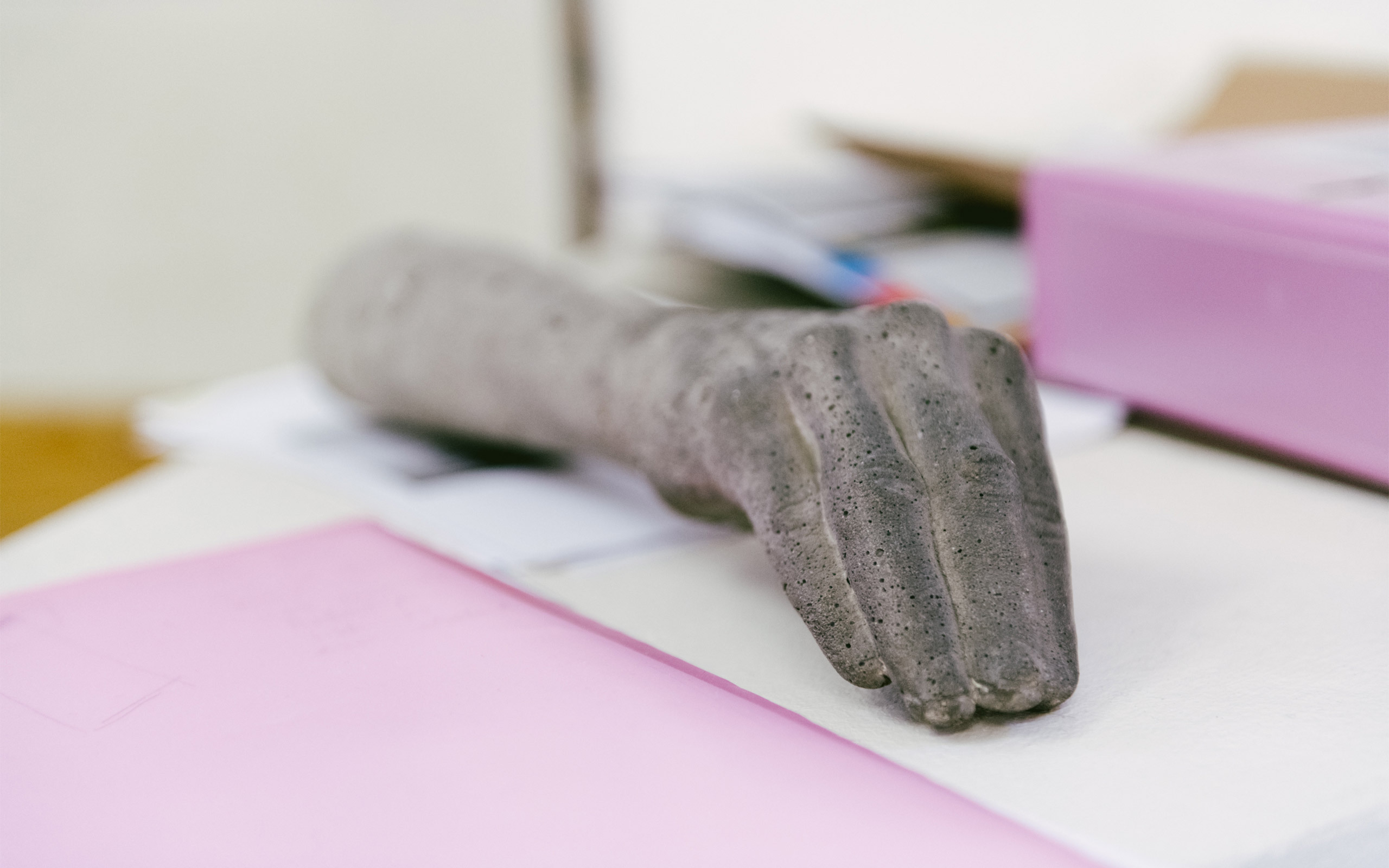
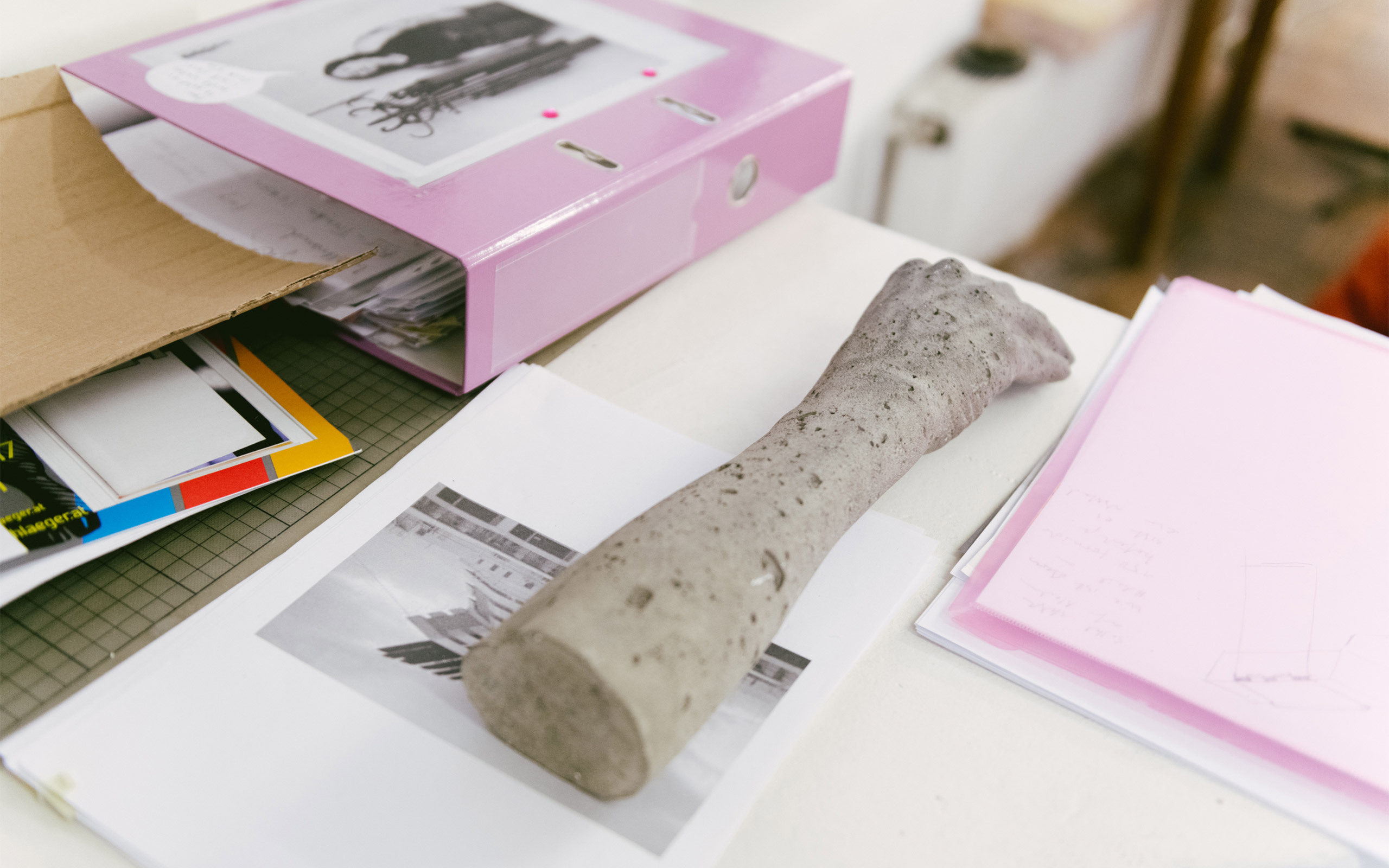
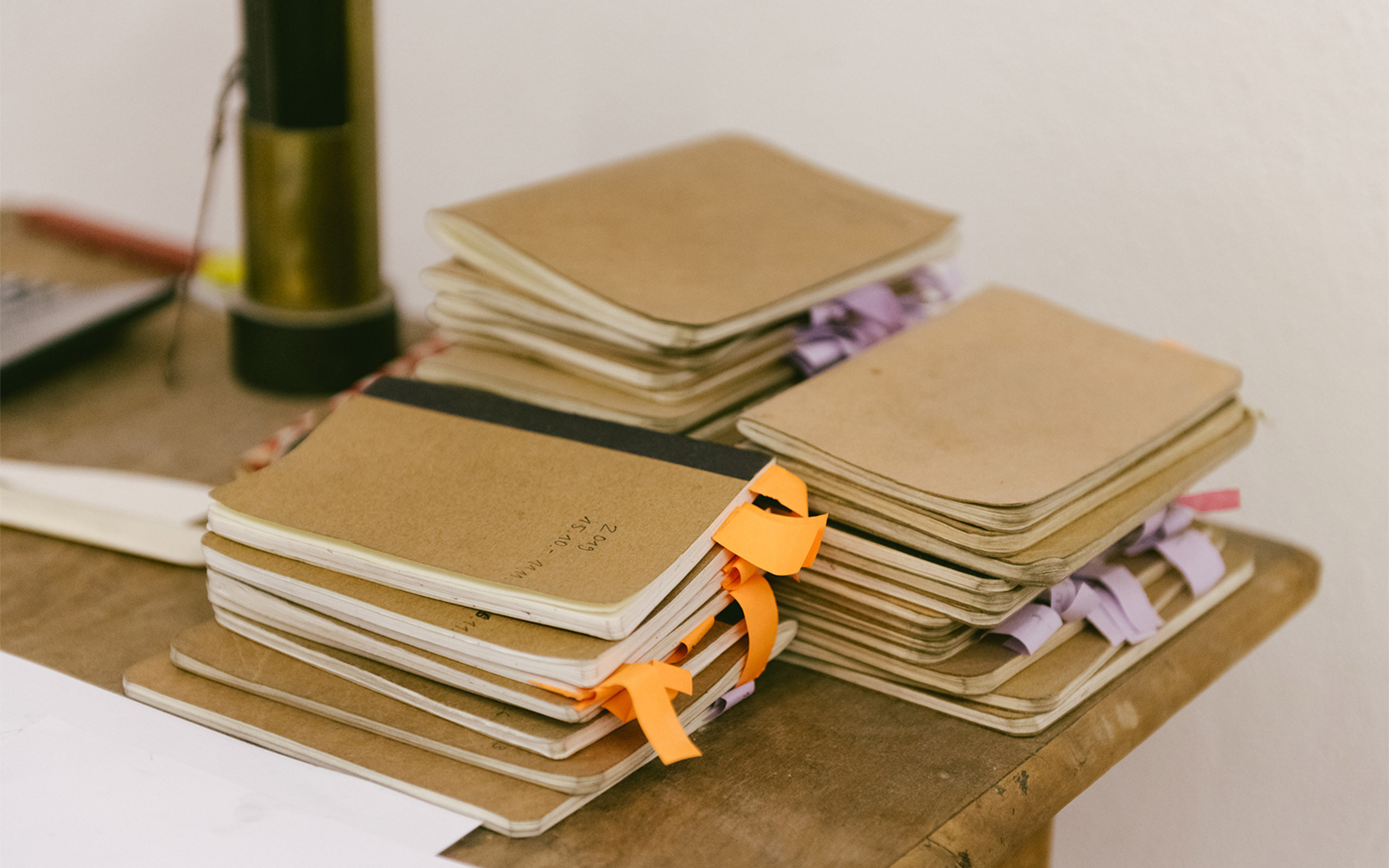
Do you have something to do with the treatment process, which is also a transition? You say that you are pushing the materials to their limits, changing them…
At first it is simply a lump, but that’s already something. Then the transition begins, this process, because the material has its own will. You can only make something very specific from a piece of metal. There are limits to what you can force on the material. You first have to make friends with it and look: Do you want to go here or there, what do you want to do with it? It's more of a joint effort, less of a forcing – although I named it that myself. But it results in a joint action.
The good enough mother trope appears several times as a work title. What interests you regarding this term, which is a core concept of Winnicott?
I look at the concept of a sufficiently good mother in a rather abstract way. Although this term exists in Winnicott's case, for me the term "mother" is not something that has to be biologically attached to something feminine, but rather to a person who represents a great importance, a great reference. And I don't want to dissolve anything. It's often the case with my sculptures that you first look at them and then at the title, whereupon something else is set in motion, perhaps a contradiction or an extension of associations. You ask yourself: "Okay, how do I get this form and title together now?" And I don't want to resolve this.
Is there a misunderstanding that occurs frequently in relation to your work and that you would like to clear up?
An attempt is made, especially in female positions, to interpret everything biographically. Of course everything has an origin. No matter how abstract a form is, it is still something personal. But I get stressed when people always try to read everything biographically. The object is first and foremost the object, and then there's the title. That's enough for now, without knowing what the person has done, what he or she can excel at, with whom has he or she already cooperated? I think it's important for me to leave things as they are.
What are you working on at the moment?
For my new work vagina dentata a chair by Koloman Moser is the starting point, but the object has completely changed direction. The cardboard model is already standing here, it will be reproduced in steel. Usually, I hardly ever work with models. The object will stand on tops, reminding me of heaven and hell, and the entire object will be foldable.Do you have something to do with the treatment process, which is also a transition? You say that you are pushing the materials to their limits, changing them…
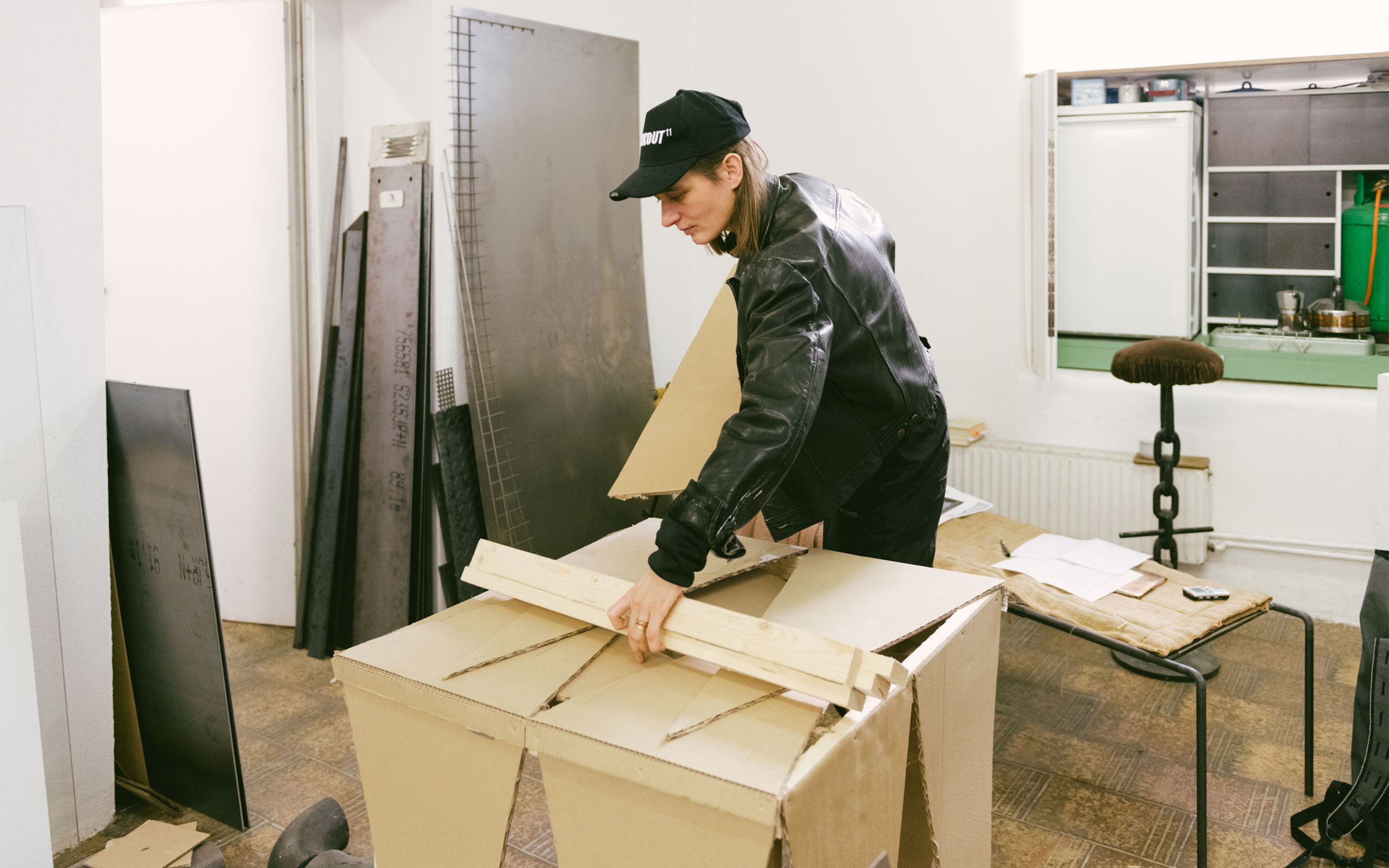
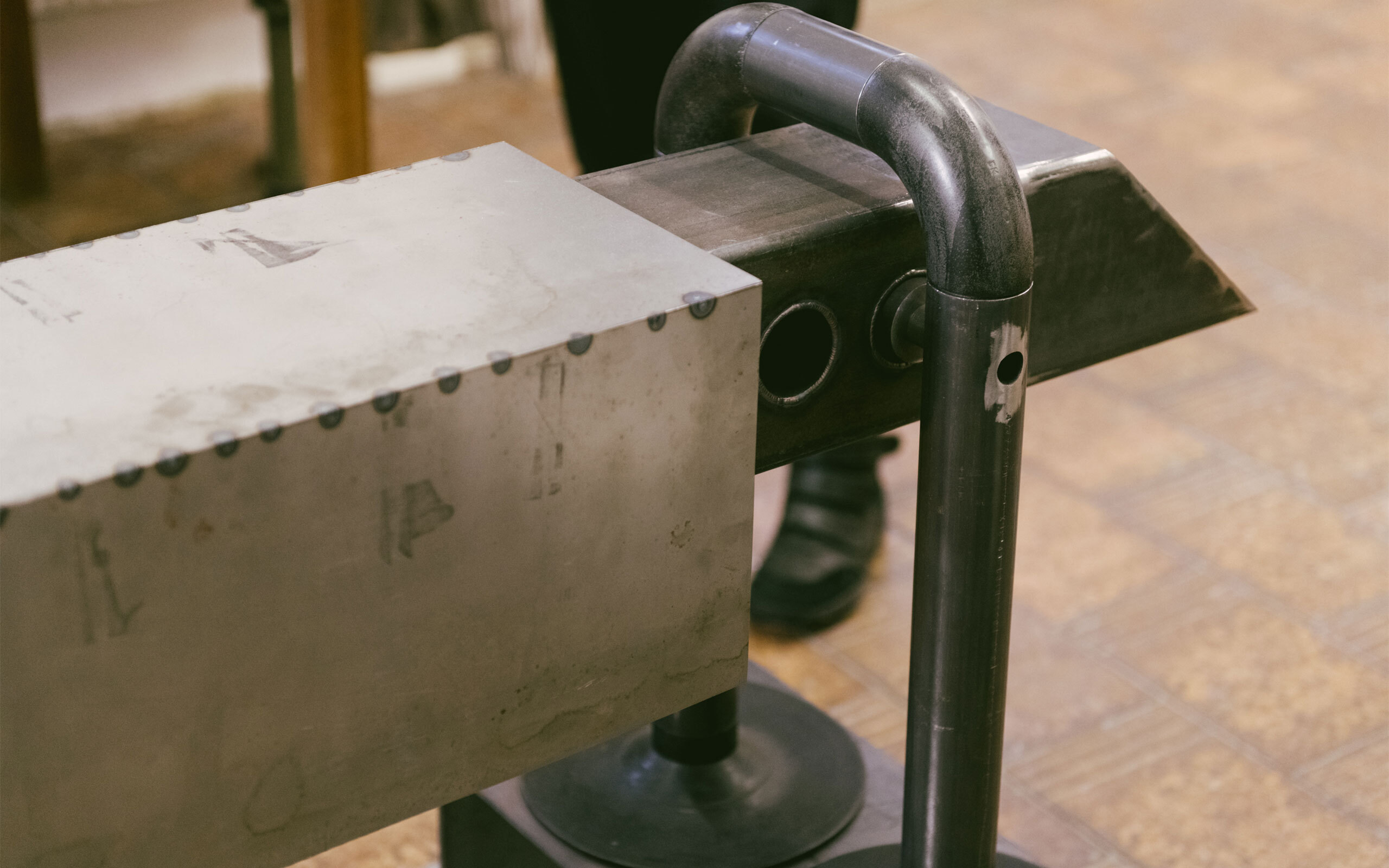
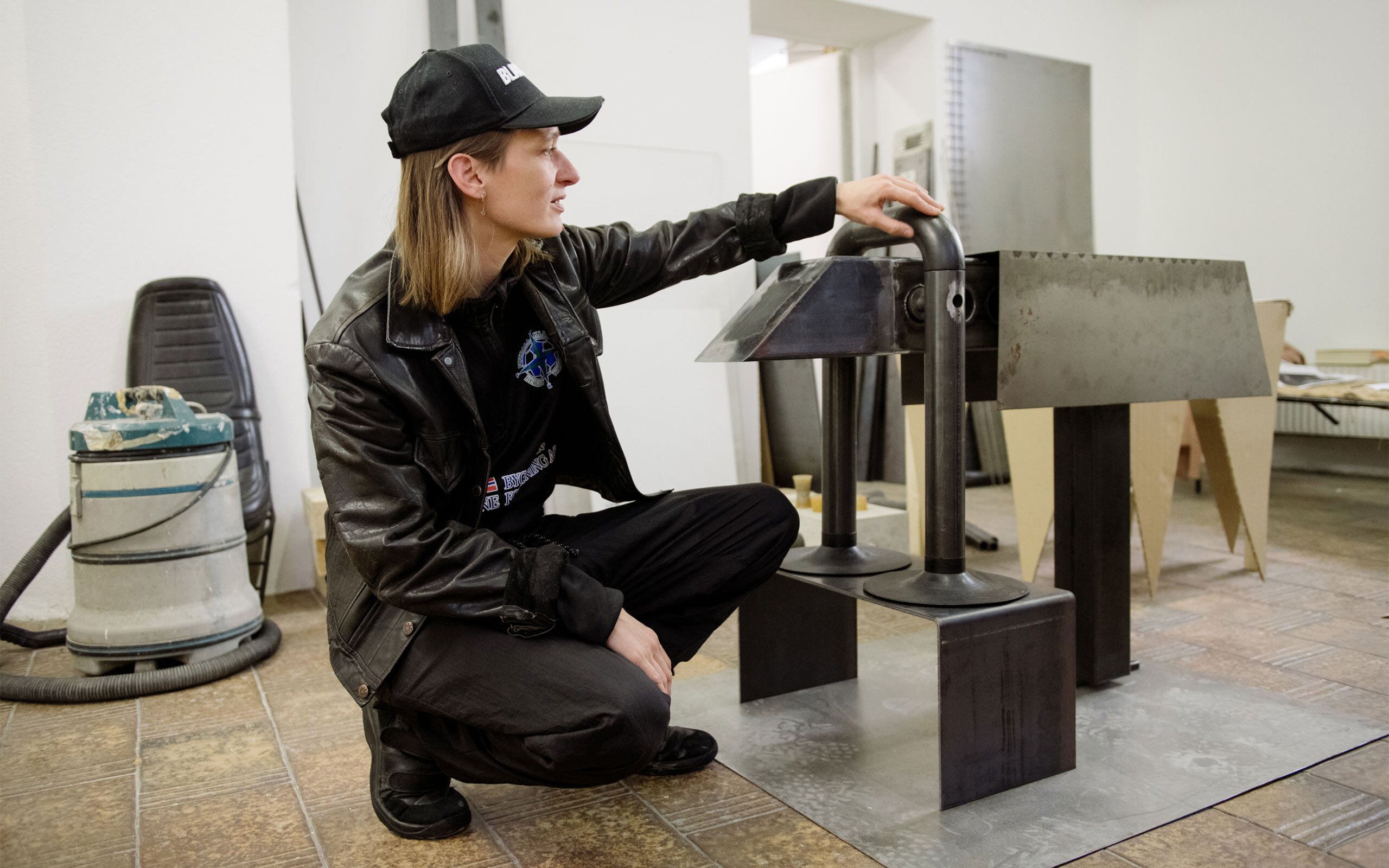
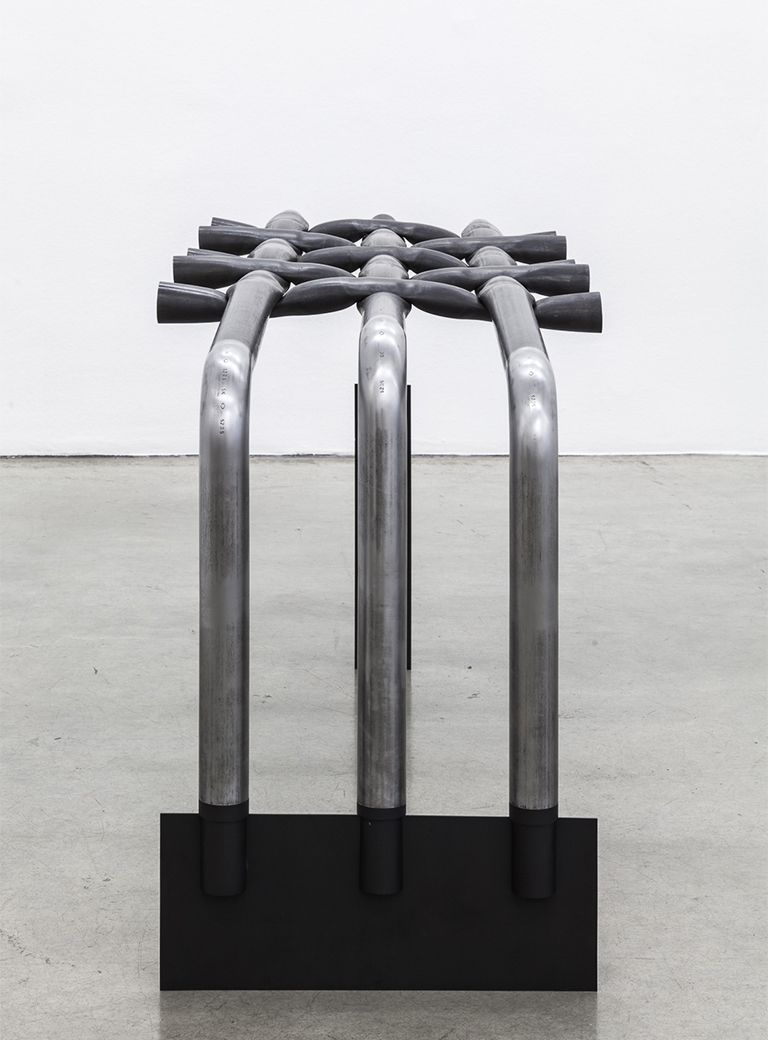
zwinger, 2019
Photo: Philipp Friedrich, Courtesy the artist and Christine König Galerie
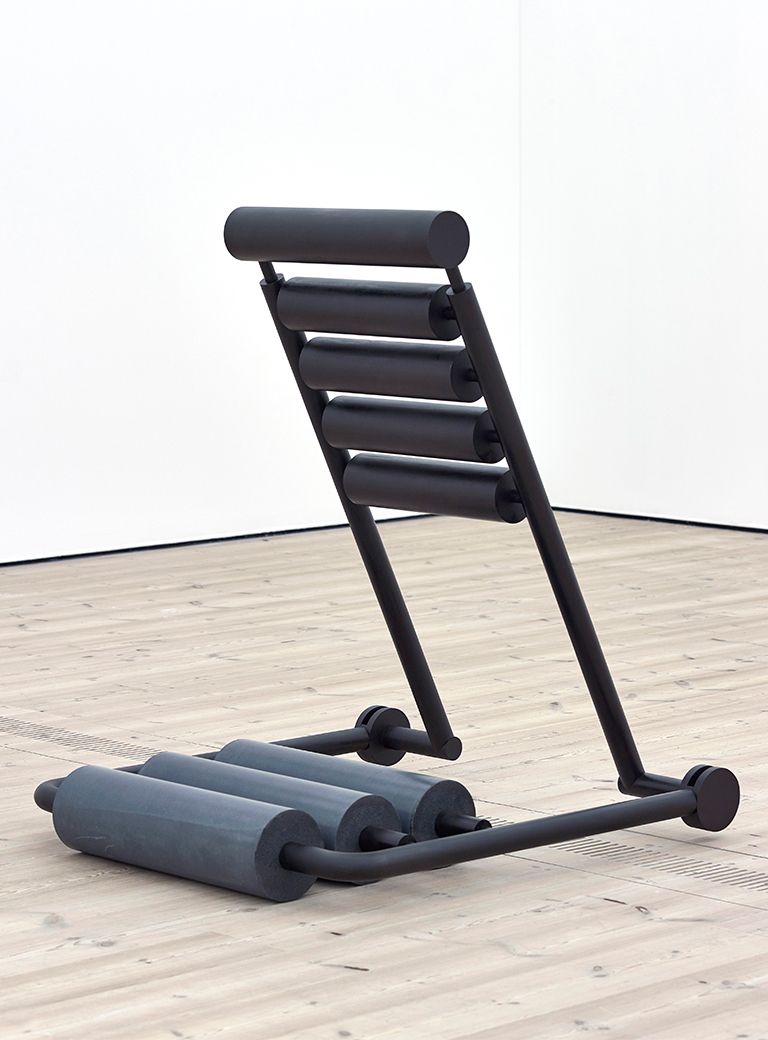
the good enough mother, 2017
Photo: John McKenzie, Courtesy the artist and Christine König Galerie
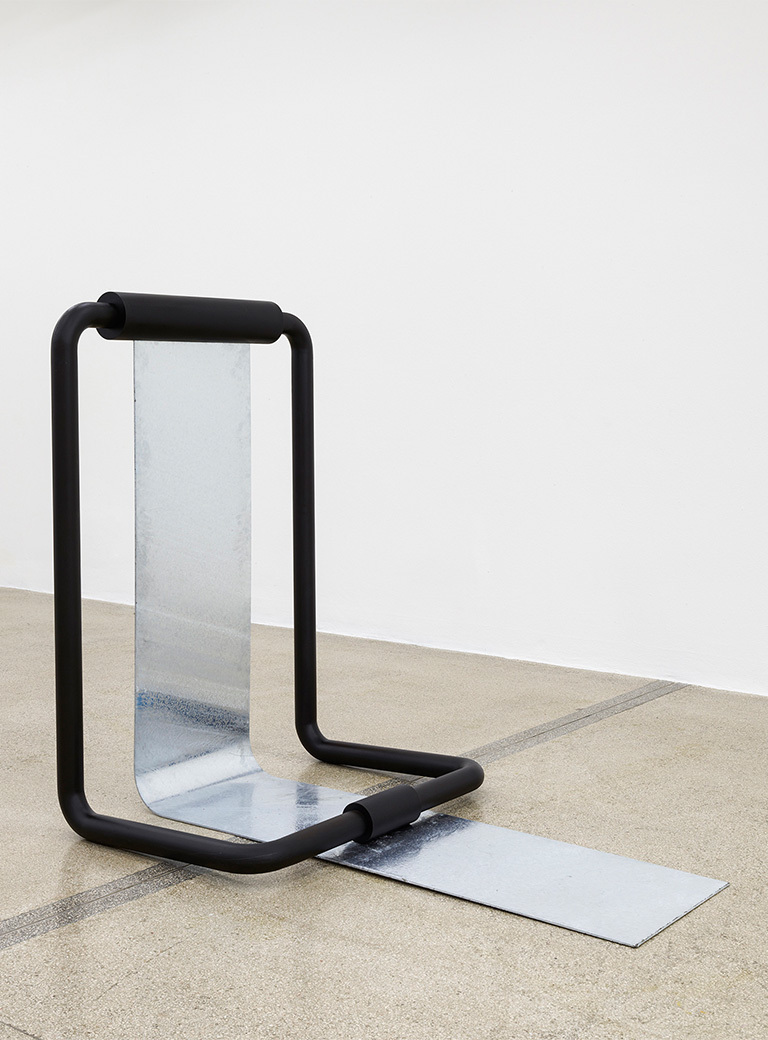
das management, 2017
Photo: Sophie Thun, Courtesy the artist and Christine König Galerie
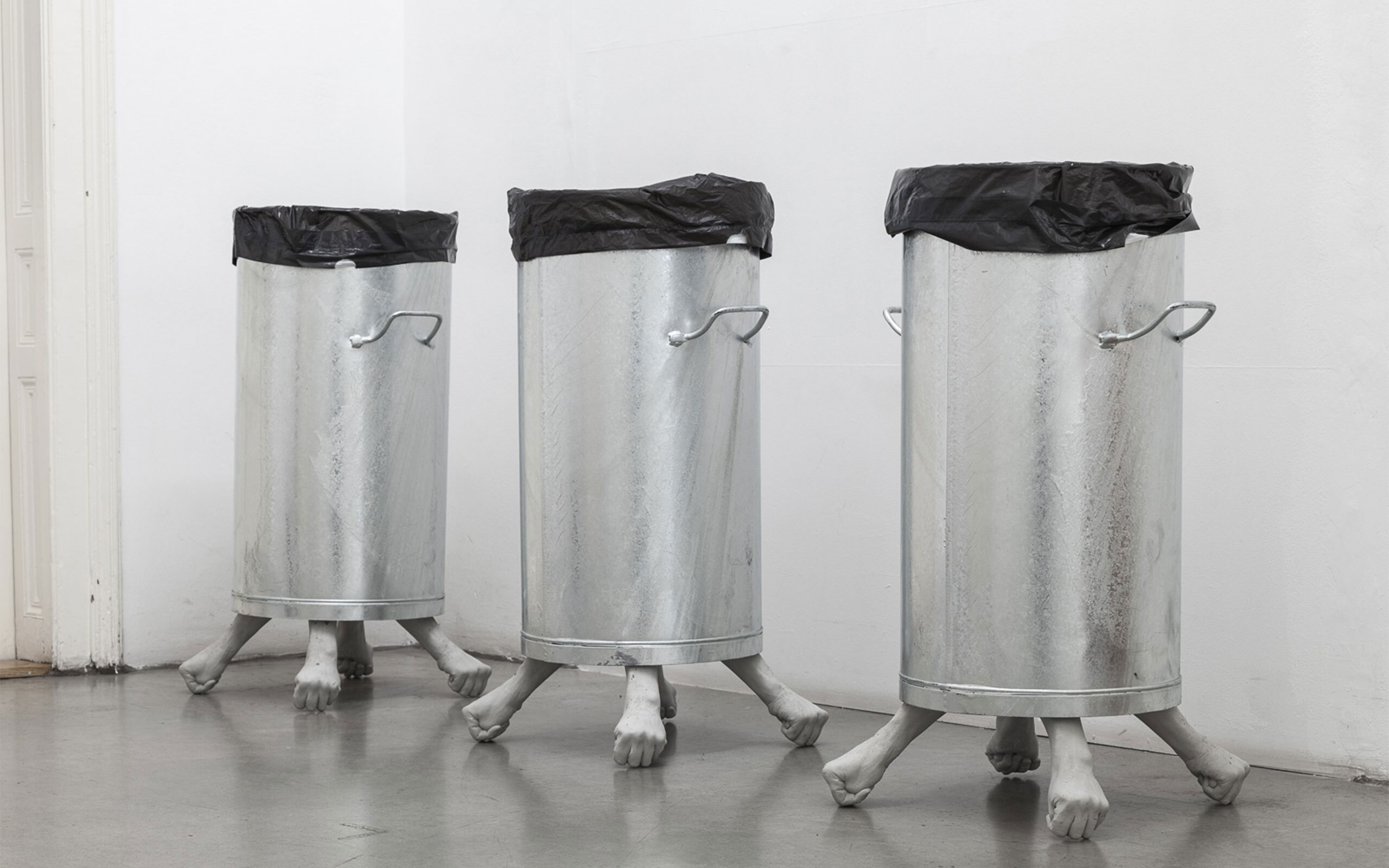
im eimer, 2019
Photo: Philipp Friedrich, Courtesy the artist and Christine König Galerie
Interview: Barbara Libert
Photos: Christoph Liebentritt


